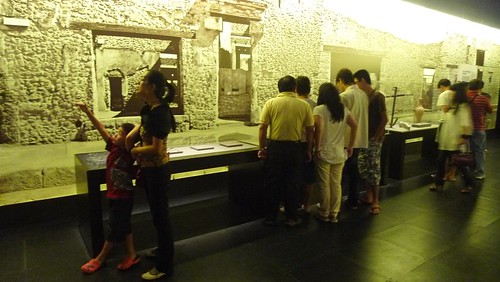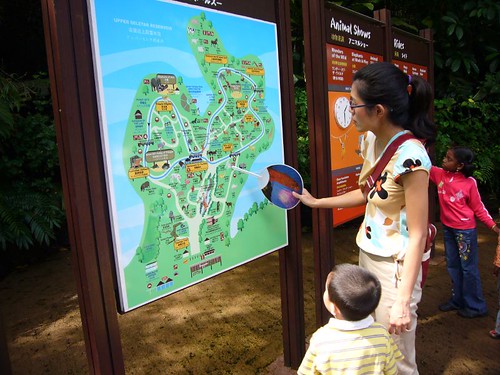
Museum visits needn’t be a yawn if you design them well (Courtesy of BelieveJay)
While doing some desktop research recently, I came across an interesting article by Gareth Davey titled “What is Museum Fatigue?” in InformalScience. The academic piece explained why visitors get tired when visiting museums, and proposed how we can better manage visitor behaviours when designing exhibitions.
Apparently, from research conducted thus far, the following findings are derived:
:
1) Visitor interest tend to reach a high plateau and remain constant for about 30 to about 45 minutes before it decreases to a lower level. This can be seen in how the orientation of visitors change from an initial slow movement around the exhibits (“that’s fascinating…”), to cruising around halls and more selective stopping behaviour (“OK, seen that, next!”).
2) Visitors typically spend less than 20 minutes in exhibitions regardless of topic and size (in a study of over 100 museum exhibitions).
3) Reversing the visitor flow dramatically reverses the situation. In a study at a Zoo, normal visitors tend to stay longer in the first few enclosures that they encounter before tapering off (ie enclosures A to E is longer than enclosures D to F). However, reversing the visitor flow reverses the results even though the cages were identical (to minimise physical environmental influences) and animal inhabitants were not swapped.
4) Exhibits further away from the main path tend to receive a lot less visitors.
So what causes visitors to museums, zoos and other interpretive attractions to lose steam? There are two hypotheses proposed here:
Visitor Attributes Hypothesis
This theory states that different people have different characteristics, and that this influences their “endurance” during visits. Factors like over exposure, diminishing attention, gender, and intellectual capacities could also affect their abilities to stay the course.
While this may be true to some extent, studies have also shown that fatigued visitors tend to display similar behaviours despite having wide variations in their demographic and other characteristics. For instance, museum visitors in China, like in the Western world, demonstrated the same “diminishing return” when visiting museums!
Environmental Attributes Hypothesis
The other school of thought is that the museum environment (arrangement of displays and exhibit architecture) affects visitor interest. This could cover factors like exhibit design, size, isolation, lighting, line-of-sight placement, sensory features (sound, smell, or touch) and others.
In zoos, animal variables such as presence, activity, size, colour and visibility tend to affect visitor behaviour. What’s more, it was shown that how people walk through exhibits/enclosures is influenced by the attraction of a salient object, distraction of an open door, and arrangement of displays.
What can one then do to reduce museum (or zoo) fatigue? Various strategies were discussed in the article and they include the following:
1) Increase exhibit distinctiveness (such as size, contrast with setting background, line-of-sight placement, etc), and locate exhibits in relation to traffic flow (landmark objects, hotspots of visitor attention, inertia and the right-turn bias).
2) Reduce mental effort required to understanding exhibits by considering how information is presented.
3) Motivate visitors to engage with exhibits by asking questions, correcting misconceptions, providing interesting content, mental imagery, handouts, 3-D objects, and opportunities for interaction.
4) Minimise distractions such as sounds, competition from other exhibit elements and novelty in the surroundings.
5) Provide opportunities for visitors to take breaks (to replenish attention capacities). Don’t overstrain their brain!
6) Develop appropriate communication objectives with exhibits containing attractive elements and carefully designed labels.
7) Employ a selective use of exhibits so that visitors need to focus only on exhibit elements that interest them. In other words, don’t overwhelm them with bulk when a limited selection would work better.



Interesting article which can be examined to also provide relief to sensitive sites in nature reserves, great!
nice article, very interesting..i love on your helpful ideas on how to attract your visitors..
I have published three more extensive reviews of museum-fatigue-related phenomena in 2009. One is published in Curator: The Museum Journal (Vol. 49, Issue 4), another in Visitor Studies (Vol. 12, Issue 2), and a third in Informal Learning Review.